|
|
|
|
Radschool Association Magazine - Vol 43 Page 9 |
|
|
Privacy Policy | Editorial Policy | Profit Policy | Join the Association | List of Members | Contact us | Index | Links |
|
|
Allan George's Gems.
|
|
|
Back Go to page: 1 2 3 4 5 6 7 8 9 10 11 12 13 14 15 16 17 18 19 20 Forward |
|
|
|
|
|
Veterans lose home support in cut to care program.
A CRUCIAL in-home care service that provides meals for veterans and war widows has been axed by the Federal Government.
|
|
|
|
|
|
Major General David McLachlan, President of the Victorian RSL, says the in-home care service is extremely important.
|
|
|
Despite a boost in defence spending of more than $5 billion in the next three years, the Commonwealth has withdrawn the funding for the Home and Community Care program. This program provides assessment, co-ordination and home-care services tailored to the needs of ex-servicemen and women and war widows.
The move has been criticised by the RSL.
The Victorian Government estimates more than 1500 Victorian veterans and widows will miss out on meals and more than 1500 recipients will no longer benefit from activities' groups when the funding runs dry next July. Victorian State Health Minister David Davis has written to Veterans Affairs Minister Warren Snowdon, urging him to reconsider the cut. Mr Davis said Victoria's war veterans deserved respect and dignity, and stripping them of these services was a slap in the face. "This is a sad decision and it is the wrong decision," Mr Davis said.
"The purpose of this funding is to make sure we provide a high level of tailored support." While many of the recipients will still be eligible to receive similar in-home care, Mr Davis said the veterans and war widows would be required to apply for the services through the general Home and Community Care (HACC) program. That is expected to add further strain to the system.
The RSL's Victorian president, Major General David McLachlan, said the service was extremely important. He urged the Federal Government to continue to fund the program. "Everyone wants to stay in their own home, but we need to offer these people support," he said. "HACC has been able to assist these veterans and war widows by looking at their requirements and tailoring support to their needs." Gen McLachlan said most of the recipients were World War II veterans or widows who had served Australia. "You would think the Government could keep it going for the small number of veterans until they go to their final resting place," he said. "It's providing care for the veterans that have given so much and who we can thank for the way we live life today."
The Government will save more than $25 million by axing the program. It says the money saved will be reallocated for veterans' mental health. Mr Snowdon's spokeswoman, Lidija Ivanovski, said the Federal Budget had made no changes to the veterans' home-care program but the money had been reallocated. "Veterans have the same right of access to Home and Community Care services as other Australians," she said. "This will not change."
|
|
|
Just in case there’s any confusion.
|
|
|
Veteran Mental Health training for Community Nurses.
Investing in the health of more than 325,000 veterans, war widows and widowers, Minister for Veterans’ Affairs Warren Snowdon recently launched a new online, interactive professional development course for community nurses. Mr Snowdon said finding time to fit professional development into a hectic work and family life is difficult for most, but for busy nurses, especially those working in remote or regional communities, it can be just about impossible.
“The
vetAWARE
course increases nurses’ understanding of the common mental health
challenges faced by veterans, and how to best support them and their
families,” Mr
Mr Snowdon said that community nurses see our most vulnerable veterans and war widows in their own home and so are uniquely placed to recognise signs of mental distress. Even the most experienced nurses will benefit from knowing where to refer their patients, and newer nurses will gain an insight into the mental health issues associated with war and war-like service.
“The interactive course was developed in consultation with nurses and other mental health professionals, and the feedback has been overwhelmingly positive,” he said. vetAWARE has been endorsed by the Royal College of Nursing Australia, and nurses who complete the course will achieve points towards their professional development requirements.
Mr Snowdon said the Australian Government is committed to providing appropriate, accessible and evidence-based mental health care for veterans. “Working with the medical community to increase their awareness and understanding of veterans’ mental health conditions is an important part of this work,” he said.
|
|
|
I said to the wife, “Quick, get me a newspaper” “Don't be silly,” she said “You can borrow my iPad” That spider never knew what hit it.
|
|
|
What's
a Bitcoin and why would you want one?
You might have heard about Bitcoin millionaires, people who raked in vast sums of real money riding this relatively new form of currency.
Bitcoins offer both a fascinating, new approach to money and similarly contain many potential pitfalls. Here's what you should know about this online phenomenon.
The history of money is fascinating. Ancient humans traded salt for fish, wheat for beer, and camels for wives. Around 9,000 BC, give or take a millennium or three, people started using an intermediary object, something they might not need but could exchange. For example, I'll take one bag of rice for my duck; I'll give you a half-bag of rice for that small clay pot or a whole bag for that big pot.
In Asia, cowry shells (considerably easier to carry than bags of rice, no doubt) were used long ago for bartering. But as trade expanded around the world, more sophisticated forms of "currency" were needed: bronze-cast knives in China, silver bars of set weights in Mesopotamia, gold bars in Egypt.
Around 700 to 500 BC, the first coins appeared, typically, stamped bits of naturally occurring silver/gold metal called electrum. Minted coins followed, their value dictated by the weight and fineness of gold or silver used. Coins from Athens, Persia, and China circulated all over the world. Around the 11th century, paper money appeared alongside coins in China. In Europe, the first paper money was a sort of IOU used to document loans in gold. The IOUs gradually formalized into official banknotes.
In the 17th century, European governments (and much of the world soon after) moved into the business of issuing paper money, backed by deposits of gold and silver. Skipping over centuries of hyperinflation, bank runs, and the end of the gold standard, we arrive at the monetary system in use today.
With the exception of cash and trade, every monetary transaction we make today goes through the same basic cycle: you offer to buy something with a credit card or cheque, a central record-keeping organization verifies whether you have sufficient funds or credit, the purchase is approved, and the transaction is posted to your account. All forms of electronic money work the same way. You put through a charge using a credit card online, or you receive or send money via PayPal, or you tap your stored-value card or phone to make a payment. As long as you have enough money or credit, you're good. The system works because the currency used remains relatively stable.
Establishing an entirely different kind of money.
Bitcoins are currency, but
they're unlike anything most of us use today. They're a blend of new
technology, old-style bartering, and free-market thinking. Although
completely electronic, a Bitcoin's value is set by the open market, not
by any government entity. Like
About four years ago, Bitcoins came to prominence as the preferred currency on the Silk Road website. As some newspapers, the majority of sales on Silk Road involved drugs. Bitcoins made those transactions untraceable. Today, Bitcoins are undoubtedly used for less sordid transactions, but their fluctuating value also gives them a commodity, or stock-like aspect. Through 2012, a single Bitcoin's value grew from US$5 to about US$13. This year, a Bitcoin cost $266 on April 10 and then fell to $125 the next day, prompting the crash of the largest online Bitcoin exchange, the Japan-based Mt. Gox. When the exchange came back online a day later, Bitcoins hit a low of $65. A couple of weeks later, the value almost doubled to $120.
Nobody knows for sure why the Bitcoin market soared, then crashed. One theory places the blame on Cyprus's banking crisis, where thousands of bank accounts received involuntary "haircuts" by a Cypriot government flailing for cash. Panicked depositors ran for alternatives, among them, Bitcoins. Others speculate that organized crime manipulated the market to buy low and sell high. (On April 24, Mt. Gox was also hit by a massive distributed-denial-of-service attack.)
Bitcoins are kind of an anarchist's version of cowry shells, not beholden to any government, bank, political group, or individual trying to corner the market in a specific commodity. They are entirely electronic. At its heart, a Bitcoin is simply a number, like the serial number on a banknote. To use a Bitcoin, you sign in to your Bitcoin wallet, stored either at an online service or in an application on your personal computer or mobile device. The wallet shows your Bitcoin balances; it's also where you get Bitcoin addresses (essentially separate accounts), which you give to other Bitcoin users when transferring the currency. According to the "How does Bitcoin work?" the system is somewhat like a distributed email network. Bitcoins also work somewhat like a typical online bank transfer but with important differences. For instance, there's no bank-like clearinghouse for Bitcoin transactions. Nobody has a list of all account numbers and owners. There is, however, an ongoing list of transfers: which accounts transferred how much to which other accounts. The list is public, it's stored in hundreds of different locations, on hundreds of different computers. If you’re interested, you can see every transaction going on in real time HERE. Who owns the accounts is, on the other hand, private.
The technical details of Bitcoin transfers, how Bitcoins change ownership and how the system prevents transferring the same Bitcoin twice, involve public-key cryptography and some fancy computing techniques. Unlike a bank, the Bitcoin network doesn't keep track of your Bitcoins, only Bitcoin transactions. This means you're responsible for protecting your Bitcoin wallet.
When you ask somebody to send money, you have to give them a Bitcoin address, essentially an encrypted public key. The Bitcoin software actually encourages you to generate a new address number for each transaction. If you get money from one person and then send that money to someone else using a different address, it's basically impossible for anyone other than you to know where the money came from or where it went. There's some time delay on the transactions. Typically, it takes 10 minutes for Bitcoin transfers to take effect. The reasons are complex, but they're associated with preventing double spends, trying to spend the same Bitcoin twice, either intentionally or inadvertently. Since there's no central repository of accounts and balances, the delay is basically the price you pay for having a whole bunch of computers simultaneously verify the transactions.
If you're accustomed to bank wire transfers taking an hour, a day, or even a week to complete, 10 minutes doesn't seem like much of a hardship. And the Bitcoin verification runs 24 hours a day, seven days a week on hundreds of computers, making the system fairly reliable. The first widely recognized Bitcoin transaction was the purchase of two pizzas. The buyer reportedly paid 10,000 Bitcoins — pricey even at early Bitcoin rates.
Where Bitcoins came from and where they're going.
Bitcoins have a fascinating history. The originator of the concept, who went by the handle "Satoshi Nakamoto," has never been identified. I say "went" because Satoshi appeared out of the blue in 2008, published a few papers, never made a public appearance, and stopped answering emails in December 2010. However, the importance of Bitcoins doesn't rest in the person or persons who created it. The creation itself holds the answers to pressing money problems such as making private transactions without resorting to piles of cash.
If you want to keep your Bitcoin transactions private, there are two points of vulnerability to online snoops: when you buy Bitcoins using some other currency and when you sell your Bitcoins. Once inside the system, you're anonymous. In other words, when you use Bitcoins only to pay for purchases, there's no traceable record. (One person recently sold his house with Bitcoins, another sold a Porsche.) That obviously presents a problem for law enforcement. Because Bitcoins make investigations more difficult, law-enforcement agencies are leaning hard, sometimes with sanctions, sometimes with legislation, on the Bitcoin clearinghouses to provide information about transactions. Mt. Gox's sign-up page warns that if you try to access your account using the Tor network or public proxy servers (two common means of disguising your location), they might suspend your account and force you to submit anti-money-laundering documents. (A bitcoin.org page, on the other hand, recommends using Tor to hide your PC's IP address.)
Today there are approximately 11 million Bitcoins in circulation. The system is designed to let the number of Bitcoins increase at a very slow rate — by 2140, there should be about 21 million Bitcoins in circulation. If you want to learn more about Bitcoins, take a look at the official Bitcoin FAQ.
Bottom line: If you do become a Bitcoins user, keep in mind that the value of your Bitcoins can change rapidly and unpredictably. Whenever someone asks me whether I'd buy Bitcoins right now, my answer is a resounding "Hell no!" It's an interesting concept — a currency not tied to any country or financial institution — but the recent run-up and decline of Bitcoin pricing give me nosebleeds. Put your savings in Bitcoins, and you might make enough money to retire in the next year. Or you could lose 90 percent of your gamble — er, investment.
|
|
|
Men have feelings too you know – for example, I feel hungry.
|
|
|
Another way to get ripped off.
There is a new and clever credit card scam - be wary of those who come bearing gifts.
It works like this:
You get a phone call from someone who say they are from some outfit called: "Express Couriers" asking if you are going to be home because there is a package for you and the caller says the delivery would arrive at your home in roughly an hour. About an hour later, a delivery man turns up with a beautiful basket of flowers and wine.
If/when you enquire as to who the sender is you’ll be told by the delivery man that he was only delivering the gift package and a card is being sent separately; (the card never arrives!). There will also be a consignment note with the gift. The delivery man will then explain that because the gift contains alcohol, there is a $3.50 "delivery charge" and as proof that he had actually delivered the package to an adult, and not just left it on the doorstep to be stolen or taken by anyone.
All this sounds logical so you offer to pay him cash but you’ll be told that the company requires the payment to be by credit or debit card only so that everything is properly accounted for and also it will be further proof that the item was delivered to an adult. So you produce your credit card which the delivery man swipes through one of those portable EFT machines that are common these days. You get a printed receipt, and all seems fine.
But…..when you get your next credit card statement, you’ll find your credit balance has increased considerably.
What you wouldn’t know was that the little ATM machine carried by the delivery man had been “modified” and instead of sending your details off to your credit provider, it recorded your card details and also your PIN number. A great little lurk, if they do 5 a day and rip people off to the tune of (about) $4000, that $20,000 a day they make from unsuspecting honest people.
The only thing you can do is contact your bank which will cancel your card immediately – but by then it’s too late, the funds have gone. When you report the incident to the police you will find that you are not Robinson Crusoe and that lots and lots of people have similarly been stung.
There are a lot of emails doing the rounds, all warning people about this scam, and nearly all of them say the scam originated in Canada. Unfortunately, that is not true, it originated in good old Sydney town - see HERE.
So!!! Be wary of accepting any "surprise gift or package", which you neither expected nor personally ordered, especially if it involves any kind of payment as a condition of receiving the gift or package. Also, never accept anything if you do not personally know or there is no proper identification of who the sender is.
Above all, the only time you should give out any personal credit/debit card information is when you yourself initiated the purchase or transaction!
|
|
|
I can't understand why a person will take a year to write a novel when he/she could easily just go out and buy one for a few dollars.
|
|
|
The 'Night Witch'.
Nadezhda Popova, a woman who carried out hundreds of bombing raids as part of Russia's elite all-women World War Two air squad, died in July 2013. She was 91 years old.
Nadezhda was born in Shabanovka on December 17, 1921. The daughter of a railwayman, she was bitten by the flying bug after a plane landed near her house. At 15 she joined a flying club and at 16 she made her first parachute jump.
She volunteered to become a bomber pilot after her hometown was occupied by the Germans and her brother was killed fighting at the front. She rose to the rank of lieutenant-colonel before returning to her job as a flying instructor after the war. She and her husband Semyon Kharlamov stayed together until he died in 1990.
Nadezhda was one of the first to volunteer for Stalin's all-women air force units, she flew 852 missions against the Germans in a rickety wooden biplane which had no guns or parachutes and the pilots navigated by stopwatch
The Nazis dubbed them the 'Night Witches', on account of the way they would cut their aircraft engines to silently swoop in before dropping their bombs. The 'whooshing' noise they made as they passed overhead was said to resemble a witch's broomstick.
The aircraft, made of wood and fabric, were slow and cumbersome. They had no radio, no guns and no parachutes. To navigate, the pilots used a stopwatch and a map. They were too vulnerable to fly during the day so only flew night missions. Their job was to harass the German positions, taking out the troops' encampments, storage depots and supply lines.
While they were unable to inflict any strategically important damage, the psychological damage on German morale was said to be immense.
Downtime: Female soviet pilots of the 46th Guards Air Force Regiment relax between missions against Germany during World War II.
Because the Polikarpov planes were only capable of carrying two bombs strapped under their wings the pilots had to fly multiple missions every night, returning to base to collect more bombs. Nadezhda Popova once famously flew 18 in a single night.
According to her obituary in The Times, it was the freezing cold weather that she remembered the most.
Action stations: Night Witch pilots receive orders before a raid on the Byelorussian front in 1944.
She recalled: 'When the wind was strong it would toss the plane around like a cork in a raging river. 'In winter when you'd look out to see your target better you got frostbite, our feet froze in our boots, but we carried on flying.
'You
had to focus on the target and think how you could hit it. There was no
time to give
Nadezhda Popova (second from right) with (from left) Squadron Navigator Yekatrina Ryabova, Flight Commander Raisa Yushchina, Navigator Mira Paromova and (far right) Squadron Commander Marina Chechneva read a fashion magazine in Eastern Pomerania, in 1945.
The
tactics was to fly in formations of three with two of the planes
breaking off to act as decoys and attract the searchlights while the
third slipped in to drop its bombs. On one occasion after crash landing
in the North Caucasus she joined a retreating Soviet column in which she
met another downed pilot Semyon Kharlamov.
His head was heavily bandaged so only his eyes were showing, but he charmed her with jokes and after meeting up several times over the course of the war, they married.
She is survived by a son who is a general in the Belarussian air force.
Solar flight
Recently the solar-powered aircraft Solar Impulse touched down safely at
John F. Kennedy International Airport, completing its coast-to-coast
journey across the domestic United States. The aircraft took off from
Mountain View, California on the 3rd May, on the first step
in a multi-leg trek. The aircraft ‘hopped’ its way across the US with
stops at Texas, Missouri, and Virginia with the aircraft and the Solar
Impulse team resting several weeks between excursions. Each leg took
between 19 and 25 hours.
The Solar Impulse HB-SIA is a single-seat electric aircraft fuelled in its entirety by solar panels. Over 11,000 solar cells are spread across the plane's 208 foot wingspan, providing power and charging the batteries that take over during night flying. The Solar Impulse had previously conducted both international and intercontinental flights as well and to date is the first aircraft to ever complete a solar-powered flight across the United States.
During the flight a tear was discovered on the underside of the plane's wing. After helicopters took photographs of the plane it was determined that the eight foot tear was stable, and an earlier than scheduled landing for the aircraft was planned. Having completed the cross-country flight, the Solar Impulse team's next goal is to fly across the entire world using only solar power, a task for which it will be looking to its new plane: the HB-SIB.
|
|
|
Paddy says to Mick "I found this pen, is it yours?" Mick replies "Don't know, give it here." He then tries it and says, "Yes it is" Paddy asks "How do you know?" Mick replies, "That's my handwriting"
|
|
|
THE TITANIC.
We all think the Titanic was a huge ocean liner – but was it?
Below is a comparison against the current biggest cruise ship, the “Allure of the Seas”. Surprising isn’t it??
|
|
|
|
|
|
|
|
|
Scam Watch
Re the story on Scams in the previous issue, I showed the story to our local police and they told me about a booklet that warns about scams that are prevalent in Australia.
You can get a copy of it HERE.
Some people are just so clever, see HERE
Airbus engine run story.
There are emails doing the rounds (with heaps of pretty pictures) showing an Etihad Airways Airbus A-340 all smashed up at an airfield in France. The story in the email tells all who take the time to read it that the accident was caused by an Arab flight crew who didn’t know what they were doing.
This is a copy of the email:
This brand
spanking new Airbus 340-600, the largest passenger airplane ever built,
sits just outside its hangar in Toulouse, France without a single hour
of airtime.
Enter
the Arab
The takeoff warning horn was blaring away in the cockpit because they had All 4 engines at full power. The aircraft computers thought they were trying to take off, but it had not been configured properly.(flaps/slats, etc.)
Then one of the ADAT crew decided to pull the circuit breaker on the Ground Proximity Sensor to silence the alarm. This fools the aircraft into thinking it is in the air.. The computers automatically released all the brakes and set the aircraft rocketing forward.
|
|
|
|
|
|
|
|
|
The ADAT crew had no idea that this is a safety feature so that pilots can't land with the brakes on. Not one member of the seven-man Arab crew was smart enough to throttle back the engines from their max power setting, so the $200 million brand-new aircraft crashed into a blast barrier, totaling it.
The extent of injuries to the crew is unknown due to the news blackout in the major media in France and elsewhere. Because......... “Coverage of the story was deemed insulting to Muslim Arabs”.
|
|
|
|
|
|
|
|
|
Finally, the photos are starting to leak out.
· One French Airbus: $200 million dollars · Untrained Arab Flight Crew: $300,000 Annual Salary · Unread Operating Manual: $300
Aircraft meets retaining wall and the wall wins - PRICELESS!
Well, like most of these conspiracy stories that people push onto the net without first checking, this one is partly true, there was an accident but the inference is garbage.
|
|
|
|
|
|
|
|
|
The photographs displayed do represent the aftermath an Airbus 340 engine test that ended in a ground collision, but unconfirmed, pejorative information has been added to the accompanying text which describes the circumstances of the accident.
On 15 November 2007, a four-engine Airbus A340-600 (which is not actually “the Largest passenger airplane ever built) in the process of being delivered to Abu Dhabi-based Etihad Airways was undergoing ground engine testing at the Airbus Technical Centre in Toulouse, France. During those tests, the aircraft somehow broke Loose and crashed into the test-pen wall as pictured above. According to press reports, nine people — two Airbus employees and seven employees of Abu Dhabi Aircraft Technologies (ADAT), a service provider contracted by Etihad — were aboard the airliner at the time, and four of them were injured.
It is not true, as claimed, that there was “a news blackout in the major media in France and elsewhere” because “coverage of the story was deemed insulting to “Muslim Arabs.”
Although the accident did occur while ground engine tests were being conducted with the planes parking brake applied, a report released by French investigators in December 2008 did not identify the cause of the crash to be ADAT technicians who were unfamiliar with the aircraft and overrode a vital safety feature.
You can read the full and truthful report HERE.
|
|
|
|
|
|
|
|
|
|
|
|
|
|
|
|
|
|
Velly Intelesting – but stupid!!!! |
|
|
|
|
|
Back Go to page: 1 2 3 4 5 6 7 8 9 10 11 12 13 14 15 16 17 18 19 20 Forward |
|
|
|
|
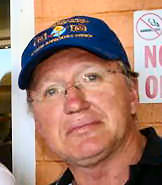
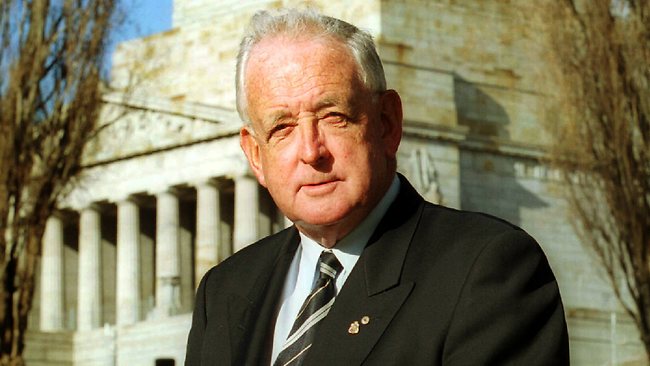

 Snowden
said. “The Department of Veterans’ Affairs (DVA) contracts hundreds of
community nurses around the country to provide health services to former
and current servicemen and women, and war widows and widowers”.
Snowden
said. “The Department of Veterans’ Affairs (DVA) contracts hundreds of
community nurses around the country to provide health services to former
and current servicemen and women, and war widows and widowers”.
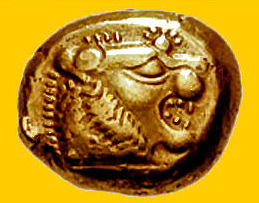
 cash, Bitcoin transactions are untraceable. If you want to transfer
significant amounts of money through traditional channels, it takes
either suitcases of cash or at least one intermediary bank, along with
all the required paper trails and fees. Not so with Bitcoins. Using some
cryptographic magic and extreme redundancy, the Bitcoin network requires
no central bank, no list of Bitcoin holders, nothing that can trace a
person to a specific transaction. If that sounds like an ideal setup for
money launderers, drug dealers, and/or fugitive prime ministers, you're
on the way to understanding the early attraction of Bitcoins.
cash, Bitcoin transactions are untraceable. If you want to transfer
significant amounts of money through traditional channels, it takes
either suitcases of cash or at least one intermediary bank, along with
all the required paper trails and fees. Not so with Bitcoins. Using some
cryptographic magic and extreme redundancy, the Bitcoin network requires
no central bank, no list of Bitcoin holders, nothing that can trace a
person to a specific transaction. If that sounds like an ideal setup for
money launderers, drug dealers, and/or fugitive prime ministers, you're
on the way to understanding the early attraction of Bitcoins.


 In
1941, as the Soviet Union struggled desperately to stop the German
advance, Stalin ordered the formation of three all-women air force
units. Among the first volunteers was 19-year-old Nadezhda Popova, who
would go on to become one of the most celebrated heroes of the Soviet
Union. Popova flew 852 missions against the Germans in rickety wooden
biplanes and was shot down several times. Her unit, the 588th Night
Bomber Regiment was equipped with obsolete two-seater Polikarpov PO-2
biplanes.
In
1941, as the Soviet Union struggled desperately to stop the German
advance, Stalin ordered the formation of three all-women air force
units. Among the first volunteers was 19-year-old Nadezhda Popova, who
would go on to become one of the most celebrated heroes of the Soviet
Union. Popova flew 852 missions against the Germans in rickety wooden
biplanes and was shot down several times. Her unit, the 588th Night
Bomber Regiment was equipped with obsolete two-seater Polikarpov PO-2
biplanes.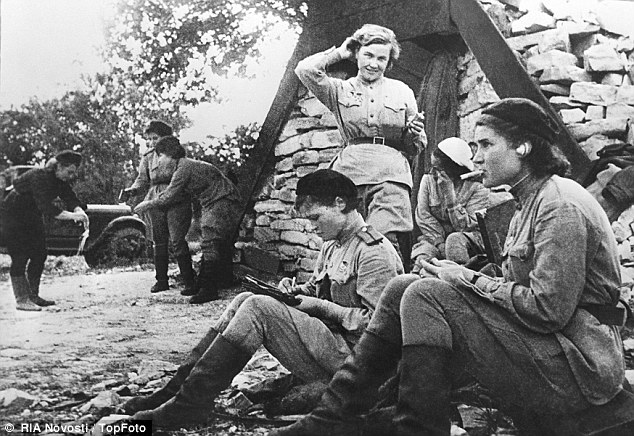
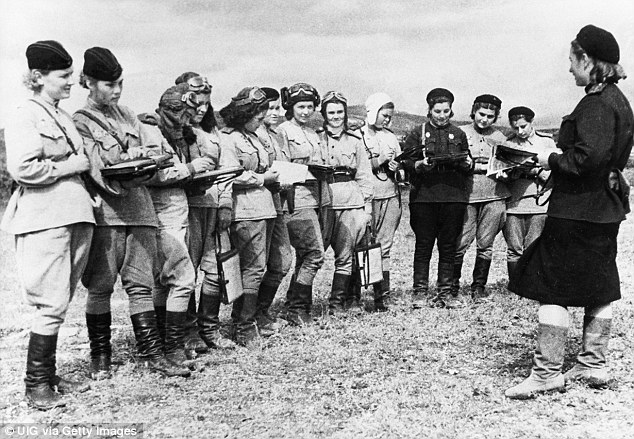
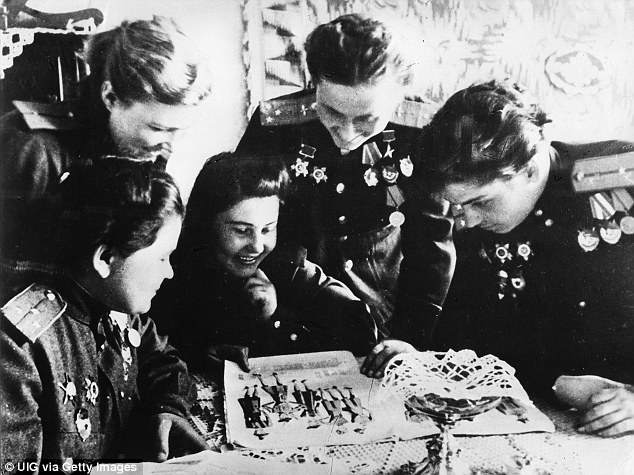 way to emotions. 'Those who gave in were gunned down and
they were burned alive in their craft as they had no parachutes.
way to emotions. 'Those who gave in were gunned down and
they were burned alive in their craft as they had no parachutes.


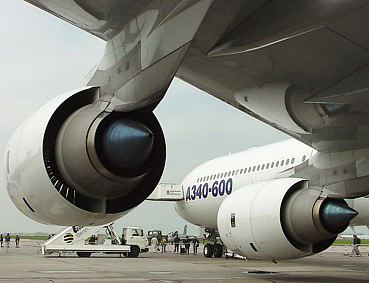 flight crew of Abu Dhabi Aircraft Technologies (ADAT) to
conduct pre-delivery tests on the ground, such as engine run-ups, prior
to delivery to Etihad Airways in Abu Dhabi.
flight crew of Abu Dhabi Aircraft Technologies (ADAT) to
conduct pre-delivery tests on the ground, such as engine run-ups, prior
to delivery to Etihad Airways in Abu Dhabi.





